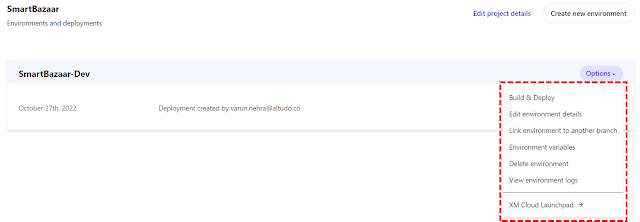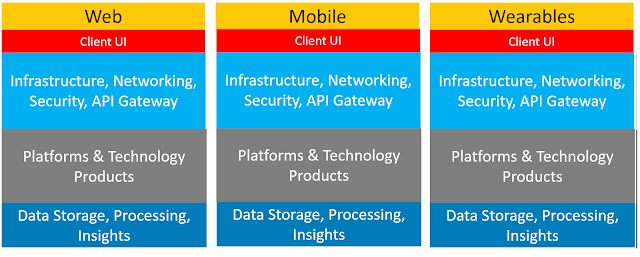Experience Marketing: The Crawl, Walk, Run of Sitecore - Part 3 - The Run Phase
Achieving the Run phase means that you have arrived when it comes to your digital marketing goals and capabilities. Before you continue with the Run phase, if you haven't already read Part 1 and Part 2 of this 3 part series, I highly recommend reading the Crawl and Walk phases first. As this the last phase of experience marketing maturity, sky is the limit to what you can do with Sitecore's experience marketing features.
Let's see what more we can do within our four categories of experience marketing tasks:
- Content Profiling
- Content Personalization
- Contact Profiling
- Analytics
The Run Phase
One thing you will start to notice as we get into the Run phase is that you start to blur the lines between the 4 categories mentioned above. Each category will start to get intertwined with another. Let's see how occurs in this phase:
- Content Profiling - Run Phase
By now you should have a good grasp of audience segmentation and having arrived at well defined personas and profiles, here is what you can do next:
- Define Custom Page Events and Failure Actions: assuming you already have your content tagged with personas, profiles, OOTB campaigns and events, you can go one step further and implement custom Page Events such as form submissions, downloads, search execution etc. and attach custom Failure Actions in case of errors, abandonment or failed form validations. These will eventually lead to better contact profiling.
- Content Personalization - Run Phase
- Content Personalization - Run Phase
Since you already have experience with Sitecore's rules set editor by now, you are ready to take on all of the rules sections available to you (Campaigns, Channels, Outcomes etc.)
- Create Outcomes & Outcome Definitions: outcomes are very similar to goals can be more important to business as they assign a monetary value to a business goal that can be used to better define engagement value and capture more meaningful analytics data.
- Code Driven Personalization (Contact Behavior Driven): given the maturity of data collected thus far by the actions executed during the Crawl and Walk phases, you can actually speed up and automate the of scope of content personalization through development efforts. The only caveat here is that you will be taking away marketer's control over manual personalization. This can be achieved through a combination of contact profile data and content taxonomy. For e.g. automating datasources for renderings based on content tags that can be associated with a contact's profile, as in, a contact identified as a homeowner shall see promos automatically updated with datasources tagged for "homeowners" or listing view of available services for homeowners.
- Contact Profiling - Run Phase
For visitor profiling, we already saw how we are capturing additional profile data though custom events and actions with custom content profiling. Defining custom outcomes during content personalization also helps improve visitor profiles. Let's see what else we can do to improve our visitor profiles:
- Custom Contact Tags & Contact Facets: since this phase is all about maturity of existing processes and data, adding custom contact tags and contact facets will help plug the gaps in the visitor profile as the business sees fit.
- Outcomes & Engagement Plans: we already defined custom outcomes based on contact's behavior profile. Engagement Plans is a concept I haven't introduced yet, as I believe it belongs in the Optimization category. But, creating engagement plans and enrolling contacts in them start's to build out your lead management funnel.
- Analytics & Optimization - Run Phase
I feel this is where we get the most value for our digital marketing effort during the Run phase. I didn't really get too deep into the Experience Optimization category as we needed to spend time and effort in getting a good foot hold on the other three categories before we were truely ready for experience optimization. Having said that, some clients can be much further along the maturity model before they acquire Sitecore as their experience platform and can embark on this much sooner.
- Content Testing: Sitecore XP offers great tools for content testing. With the personalization tools at hand, it is rather easy to create multivariate tests using Sitecore's Experience Editor. Creating the tests is one half of it, the other half is to monitor the performance and Sitecore XP provides performance reports you can monitor. Other aspects of content testing include components tests and page tests. Sitecore provide effect documentation on how to get started with content testing.
- Path Analyzer: One of Sitecore's hidden gems is the Path Analyzer tool that helps visualize all user journeys across all websites and identify the most valuable and effective user journeys with high conversion rates for the business and opportunity to shorten the path to high value targets.
There is so much more to Sitecore XP than what I have attempted to show here in this three part series. If you remember the cyclic path of experience marketing enablement from Part 1, you will start to notice that by the time you get to the run phase, every action you take in turn impacts the other 3 steps. Please feel free to post your questions or comments and I will be looking forward to your feedback.
- Custom Contact Tags & Contact Facets: since this phase is all about maturity of existing processes and data, adding custom contact tags and contact facets will help plug the gaps in the visitor profile as the business sees fit.
- Outcomes & Engagement Plans: we already defined custom outcomes based on contact's behavior profile. Engagement Plans is a concept I haven't introduced yet, as I believe it belongs in the Optimization category. But, creating engagement plans and enrolling contacts in them start's to build out your lead management funnel.
- Analytics & Optimization - Run Phase
I feel this is where we get the most value for our digital marketing effort during the Run phase. I didn't really get too deep into the Experience Optimization category as we needed to spend time and effort in getting a good foot hold on the other three categories before we were truely ready for experience optimization. Having said that, some clients can be much further along the maturity model before they acquire Sitecore as their experience platform and can embark on this much sooner.
- Content Testing: Sitecore XP offers great tools for content testing. With the personalization tools at hand, it is rather easy to create multivariate tests using Sitecore's Experience Editor. Creating the tests is one half of it, the other half is to monitor the performance and Sitecore XP provides performance reports you can monitor. Other aspects of content testing include components tests and page tests. Sitecore provide effect documentation on how to get started with content testing.
- Path Analyzer: One of Sitecore's hidden gems is the Path Analyzer tool that helps visualize all user journeys across all websites and identify the most valuable and effective user journeys with high conversion rates for the business and opportunity to shorten the path to high value targets.
There is so much more to Sitecore XP than what I have attempted to show here in this three part series. If you remember the cyclic path of experience marketing enablement from Part 1, you will start to notice that by the time you get to the run phase, every action you take in turn impacts the other 3 steps. Please feel free to post your questions or comments and I will be looking forward to your feedback.
- Analytics & Optimization - Run Phase
I feel this is where we get the most value for our digital marketing effort during the Run phase. I didn't really get too deep into the Experience Optimization category as we needed to spend time and effort in getting a good foot hold on the other three categories before we were truely ready for experience optimization. Having said that, some clients can be much further along the maturity model before they acquire Sitecore as their experience platform and can embark on this much sooner.
- Content Testing: Sitecore XP offers great tools for content testing. With the personalization tools at hand, it is rather easy to create multivariate tests using Sitecore's Experience Editor. Creating the tests is one half of it, the other half is to monitor the performance and Sitecore XP provides performance reports you can monitor. Other aspects of content testing include components tests and page tests. Sitecore provide effect documentation on how to get started with content testing.
- Path Analyzer: One of Sitecore's hidden gems is the Path Analyzer tool that helps visualize all user journeys across all websites and identify the most valuable and effective user journeys with high conversion rates for the business and opportunity to shorten the path to high value targets.
There is so much more to Sitecore XP than what I have attempted to show here in this three part series. If you remember the cyclic path of experience marketing enablement from Part 1, you will start to notice that by the time you get to the run phase, every action you take in turn impacts the other 3 steps. Please feel free to post your questions or comments and I will be looking forward to your feedback.









Your website gets supporting keyword rich contents and assured back links through these techniques jasminestar com
ReplyDelete